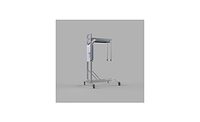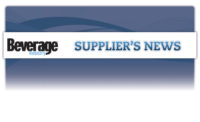Inspection and Detection
By JOANNA COSGROVE
New equipment makes it easier for beverage
manufacturers to detect problems on the line
Inspection equipment is a
vital part of every beverage manufacturing equipment line. But even in the
most careful of circumstances, there’s a chance that foreign matter
could find its way into the product, corrupting its purity and exposing the
manufacturer to potential legal headaches.
Some of the top beverage inspection concerns,
according to Nicholas Fox, chief executive officer at 3D X-ray Ltd., a
subsidiary of Image Scan Holdings plc in the United Kingdom, are bacterial
contamination stemming from inept packaging and/or seal integrity; metallic
foreign body contamination (i.e. nuts, bolts, washers) from the processing
line itself; glass or plastic shards or chips from the packaging itself;
fill-level issues (over/under-filling) that cause standards issues; and
“sabotage” involving the intentional placement of hazardous
items such as syringes and glass bodies within drink packages.
Certain types of beverages are more difficult to
inspect than others. “For visual inspection, the main problems are
non-transparent products (fruit juice, for example) and opaque packaging.
The vast majority of beverages are water and additives, so packaging is the
most common issue,” Fox says. “Glass chips from the glass
bottles are very difficult to identify because of the small objects masked
by a large amount of fluid and possible structure of the glass bottle.
Low-density (plastic) contaminants like PE and PP are very difficult to
identify. No off-the-shelf x-ray system can detect this but it may be
possible using specialized x-ray systems.”
When deciding which inspection method is right for
your processing atmosphere, it’s wise to remember that the extreme
environment in which beverages are processed can be unfriendly to
sensitive, high-tech equipment. Although most production and technical
managers are aware of these issues, many have learned the hard way. Fox
says there are a few basic features beverage manufacturers should consider
when shopping for inspection equipment. First, look for something with
enclosures that carry a minimum IP65 rating. They are more likely to cope with pressure jet wash-down. It’s
also wise to seek a unit with no flat, horizontal surfaces or gutters that
can collect cleaning water.
One of the most important features ought to be
robustness. “[A primary] attitude in this industry is that the system
has to survive without much or any maintenance,” Fox says. Often the
most robust machine will win even when it is less capable, as long as it
survives the environment.”
New equipment roundup
In July, InspX LLC, a joint venture between Key
Technology, Walla Walla, Wash., and Peco Controls, Fremont, Calif.,
produced the ScanTrac 200 X-Ray System designed to inspect packaged
products for foreign material contamination, detect packaging imperfections
and confirm contents.
ScanTrac is designed to detect product contamination
and package assembly errors at conveyor speeds up to 700 feet per minute,
inspecting as many as 2,200 containers per
minute. According to the company, the system detects foreign objects such
as metal, shards of glass, stones, bone, rubber and other dense foreign
materials that can contaminate products packed in cartons, cans, plastic
and glass. Simultaneously, the system detects product voids and
under-fills, as well as damaged containers. It can also verify that package
components and product composition conform to specifications, providing
real-time analysis, detection, and rejection to automatically remove
out-of-tolerance product from the production line.
ScanTrac is able to detect minute contaminants using
effective low-energy x-ray and sophisticated image-processing software. The
machine is CE mark certified and features a NEMA4/IP65 enclosure that
allows operation in wash-down areas.
The TapTone 1000, from TapTone Package Inspection,
North Falmouth, Mass., is built to provide inspection of plastic, metal and
glass containers for physical defects, fill level, leak detection, pressure
and vacuum. The unit can inspect as many as 2,000 containers per minute,
and can feature between one and four primary inspection sensors (acoustic,
proximity, compression, duel compression, force, X-ray or laser). The unit
also features a large touch-screen and up to seven digital inputs. Its
stainless steel control enclosure is NEMA 4X and IP65 rated.
And finally, Monitoring Technology Corp. (MTC),
Fairfax, Va., recently unveiled its 20/20 HindsightgigE, which transforms
the notion of high-speed inspection video into an easy-to-use plug-and-play
industrial device. In the event of a line-jam or process upset, video can
be scrolled back and replayed to view the event in slow motion.
The unit’s gigabit Ethernet (gigE) technology
provides ease of use, while supporting recording speeds in excess of 2,000 frames per second for as long as six hours. The
full-duplex continuous buffer allows a user to both record and review video
simultaneously, and its software interface and hardware design makes
high-speed video available to everyone in a plant at all hours of the day. BI
Penta unveils new look
Penta Water, Carlsbad, Calif., has updated its bottle
label and logo, making the Penta name bolder, and its trademark cluster of
molecules broken apart to give them the appearance of movement. The product
is now described as “ultra-purified premium drinking H2O, with the
phrases “arsenic free,” “chlorine free,” and
“MTBE free” moved to the side. “Chromium VI free”
and “Super Pro” were dropped after research revealed many
consumers didn’t comprehend their significance. In addition, a new
purple cap will replace the previously clear cap.
In conjunction with the label changes, a new case
design is in the works, and the 1-liter bottle will soon match the
0.5-liter bottle with a wave pattern on the lower half.
PET recycling up
The National Association for PET Container Resources (NAPCOR), Sonoma, Calif., recently announced a
Polyethylene Terephthalate (PET) recycling rate of 21.6 percent and a
collected volume of 1.03 billion pounds for PET post-consumer containers in
the United States for 2004. This is the highest recycling rate for
post-consumer PET containers since 2001, and represents record recycled PET
collection volumes.
Recycled post-consumer PET is used in a variety of
applications, including fiber for carpeting and apparel, strapping, and
food and non-food containers. “The record level of collected post
consumer PET containers is a sign of the success of curbside and other
collection programs in the United States. NAPCOR encourages everyone to
continue to recycle their PET containers and to support the increasing end
uses for this material,” says Gerry Claes, director, environmental
programs for Graham Packaging, and chairman of NAPCOR.
Small innovation
Contract manufacturer Rainforest Nutritionals Inc.
recently turned to a small Slim Stick package for a single-serve, on-the-go
flexible package to market Ciena Corp.’s Veri Macana nutritional
supplement in Japan. The company worked with Technical Help in Engineering
and Marketing, Marlton, N.J. (T.H.E.M.), which holds the exclusive North
American distribution rights for the Slim Stick package.
Made of high quality barrier film, the Slim Stick is
ideal for packaging dry, free-flowing products such as powdered beverages,
sugar and seasonings. The barrier film keeps air and moisture out, and the
individual-sized packet ensures that each serving is fresh. The Slim Stick
uses 40 percent less film than traditional three- and four-sided seal
envelope packages, so it is less expensive to produce and can be use for
specialty manufacturers, start-ups and other businesses with low volume
needs that want cost-effective, premium packaging.
Dressed for the holidays
Canadian Club Whisky, Courvoisier Cognac and Sauza
Tequila are getting ready for the holiday season with value-added
packaging. Consumers can purchase Canadian Club 6-Year in a commemorative
poker bottle and gift box; a commemorative bottle along with a poker hints
and tips CD necker; a traditional 6-Year bottle along with branded rocks
glasses or the traditional bottle in a gift box with Canadian Club gift
wrap. Canadian Club Reserve comes with a deck of Canadian Club playing
cards, and 50-ml. bottles in branded mesh bags.
Courvoisier VS is being offered with two highball
glasses, while VSOP is being sold with two
Courvoisier-branded rocks glasses. A 375-ml. bottle of VSOP also will be
packaged with 50-ml. bottles of Courvoisier Exclusif and XO Imperial.
Sauza Tequila Tres Generaciones Añejo is being
package with two Sauza-branded sipping glasses, while Tres Generaciones
Plata is being offered with 50-ml. bottles of Sauza Reposado and Sauza
Tres.
Top labels
The second annual Label
Industry Global Awards were given in September at a reception featuring 750
suppliers, converters and trade associations. The R. Stanton Avery Lifetime
Achievement Award, sponsored by Avery Dennison, went to Lars Eriksen,
Nilpeter A/S, Denmark. The Award for Continuous Innovation, sponsored by
Labels & Labeling, Label & Narrow Web, and NarroWebTech, went to
Gallus Ferd, Ruesch AG. And the Award for New Innovation, sponsored by
Gidue and HP Indigo, went to MPS Systems. The European Converter Award for
Continuous Innovation, sponsored by Xsys, went to Skanem. The next Awards
will take place in conjunction with Labelexpo Americas 2006, which will
take place in Chicago on Sept. 11-14, 2006.
New wine package for Super Target
Super Target stores in 14 states are set to introduce
new four-packs of Fetzer Valley Oaks Chardonnay and Merlot in
lightweight, unbreakable l87-ml. PET bottles. Known as Ready To Go! packs,
the wine is expected to be on store shelves in November. The four-packs
feature colorful photos and graphics showing consumers at the beach, a
party, or spending time together. The rollout will be accompanied by new
eight-case display racks to show off the purple, pink and green carton
graphics and make it easy for consumers to find.
According to Fetzer, the single-serve size has been
growing faster during the past year, based on Nielsen data, than
traditional wine bottle sizes, and screw-caps are gaining broader
acceptance as well, particularly in alternative packaging designed for busy
lifestyles.
Machinery shipments increase
U.S. packaging machinery shipments reached $5.344
billion in 2004, a 9.3 percent increase from the $4.889 billion in
equipment shipped in 2003, according to the Packaging Machinery
Manufacturers Institute’s (PMMI) 11th Annual Shipments and Outlook
Study. All 17 of the machinery categories that PMMI tracks in its annual
review experienced growth in 2004. Double-digit growth was experienced in
seven of the 17 categories.


